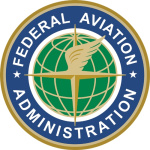- Industry: Government
- Number of terms: 35337
- Number of blossaries: 0
- Company Profile:
Also known as P-factor. A tendency for an aircraft to yaw to the left due to the descending propeller blade on the right producing more thrust than the ascending blade on the left. This occurs when the aircraft’s longitudinal axis is in a climbing attitude in relation to the relative wind. The P-factor would be to the right if the aircraft had a counterclockwise rotating propeller.
Industry:Aviation
The radial at which the turn from the DME arc to the inbound course is started.
Industry:Aviation
The distance required to complete an all-engines operative takeoff to the 35-foot height. It must be at least 15 percent less than the distance required for a one-engine inoperative engine takeoff. This distance is not normally a limiting factor as it is usually less than the one-engine inoperative takeoff distance.
Industry:Aviation
Areas where disturbances to the ILS localizer and glideslope courses may occur when surface vehicles or aircraft operate near the localizer or glideslope antennas.
Industry:Aviation
Lights that can be found both on and off an airport to identify obstructions.
Industry:Aviation
Indicators that include a wind sock, wind tee, or tetrahedron. Visual reference will determine wind direction and runway in use.
Industry:Aviation
A bending of the electromagnetic (EM) wave from the satellite that creates an error in the GPS system.
Industry:Aviation
Per 14 CFR part 1: “A referenced airspeed obtained after lift-off at which the required one-engine-inoperative climb performance can be achieved.”
Industry:Aviation
The first fundamental skill of instrument flight, also known as “scan,” the continuous and logical observation of instruments for attitude and performance information.
Industry:Aviation
